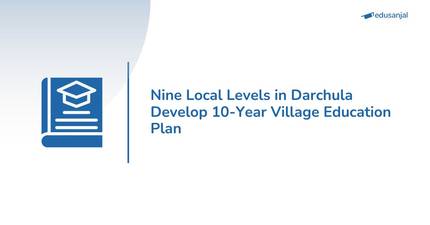While the budget allocation to the education sector for the next year may appear big in terms of figures, it turns out to be the lowest in a decade vis-à-vis percentage of the national budget .
The government has earmarked Rs98.64 billion for the education sector—the highest of all sectors—for fiscal year 2015-16, up by over Rs12 billion compared to current year’s budget of Rs86 billion.
However, there has been a sharp decline in its volume compared to the total national budget during the same period, from 13.92 percent down to 12.03 percent. The volume of education budget has been decreasing since the sector was allocated 17.1 percent of the total budget in the FY 2011-2012. It has shrunk by five percent in just four years.
The Ministry of Education record shows the government had earmarked Rs80.95 billion, or 15.65 percent of the total budget , for the education sector in 2013-14. While the budget for the current fiscal year increased by around Rs 5 billion to Rs 86 billion, the volume decreased by 1.7 percent to 13.92 percent of the national budget . The sector got 16 percent of the total budget in the FY 2004-05.
As per the international practice, 20 percent of budget and four percent of the total GDP should be allocated to the education sector and the government has made such commitments in the international forums on many occasions.
“This is not a good indication,” noted Bidhya Nath Koirala an education expert. “However, more than the budget , what we need at present is to increase the sense of accountability and responsibility among teachers and bureaucrats.”
Through the new budget , the government has announced a golden handshake for the temporary teachers for their retirement. Around 8,000 temporary teachers who have completed at least five years of service will be eligible for the golden handshake package. Under this arrangement, the package will be provided in three categories: teachers having completed 5-10 years of service, 10-15 years and abover 15 years.
Those under the first category will be entitled to an amount equal to 15 days’ salary for each service year, while those under the second and third categories will be paid one month’s salary and 45 days’ salary for each year of service period.
Similarly, the budget has come up with a programme to start reforms in the schools in partnership with the private schools with a good track record. Such private schools will be incentivised for partnering with public schools. Concerned with the poor performance of girls in the School Level Certificate examination, the government has also announced that at least one residential school will be set up for the girls in each development region. Only 40.96 percent of girls passed the SLC exam this year, while the success rate of boys stood at 53.94 percent.
The government has also planned a pilot project under which 1,000 public schools in the rural region will teach students Maths, Science and English through broadband Internet from next year.
Source: The Kathmandu Post.












